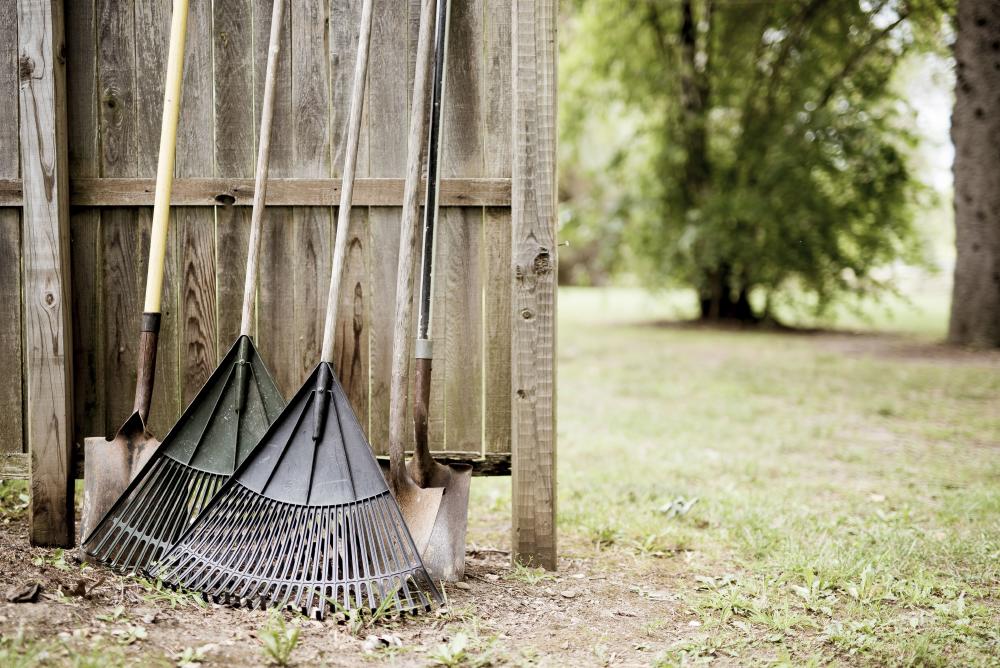
Have you ever heard about temperature in compost? Did you know that there's a cold compost and a hot composting method? But, how to keep a compost pile hot? Here a complete guide to start on it and know their benefits.
First things first: what composting means? You can read 3 keys to understanding the Compost Meaning and his universe. Composting is a method that consists of the degradation of organic matter, with which it is possible to obtain a 100% natural fertilizer with great nutritional and ecological value, which has the capacity to improve the physical, chemical and biological characteristics of the growing medium, as well as to provide the elements that plants need for a healthy development.
There are several composting techniques, one of them is fast composting or hot composting, which, like slow composting and vermicomposting, provides an important amount of benefits to the crop, but with a key difference: it can be obtained in less time and with better yields.
This type of composting, to be successful, it is necessary to take into account several factors, and mainly the temperature. Thanks to it, it is possible to increase the biological oxidation. Also humidity is important, you can read What can you do if your compost is too dry? Check these 4 tips!
You may ask how to keep a compost pile hot? If you are planning to start a hot compost you have to know that a compost thermometer is needed. Just to give you an idea for what it means, at the beginning the temperature should be between 15 and 45 degrees until reaching 60 or 75 degrees. It is important to reach these temperatures to allow eliminating any pathogen that may exist in it, so it helps to control diseases in the soil.
How to keep a compost pile hot is easier than imagined, due to the fact, we commonly start composting in a closed container, in which temperature increases itself. The answer to why the compost pile becomes hot lies in a chemical process where nitrogen and carbon are essential.
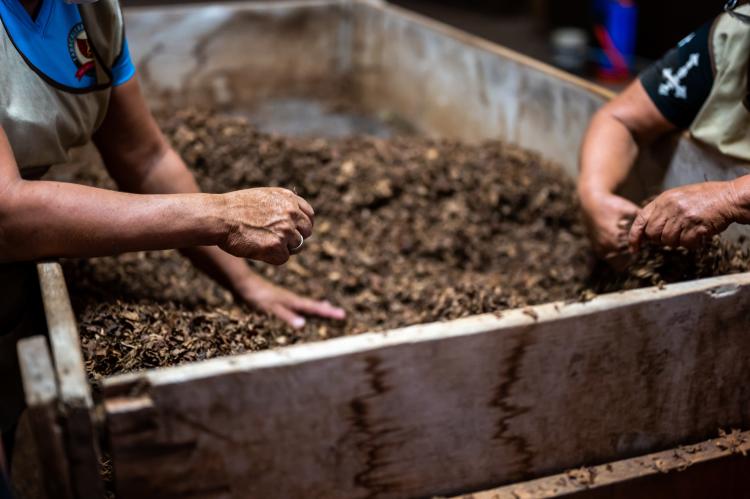
Compost pile.
One of the most important parameters to keep a compost pile hot and keep it function properly is the initial ratio of carbon to nitrogen.
Materials with high cellulose content (rich in carbon), such as cereal straw cellulose (rich in carbon) such as cereal straw (wheat, oats, rye, wheat grass), dry grasses, wood, branches, sawdust, etc., decompose slowly. On the other hand, materials of animal origin (manure, slaughterhouse waste, fish, etc.) and green grasses (alfalfa, vetch, beans) decompose in less time because they are richer in nitrogen.
| Nitrogen-rich materials | Materials with a Carbon-to-Nitrogen ratio equal to 25-30:1 | Carbon-rich materials |
|---|---|---|
| - fresh green manure - alfalfa bales - animal manure - dried blood - Household waste - grass clippings - decomposed manure - tomato leaves, cabbage - seaweed -comfrey, nettle | - alder, ash leaves - litter manure - weeds - coffee grounds - potato leaves | - corn, wheat and cereal straw - sawdust - paper, cardboard - peat - Holm oak, birch leaves - chopped twigs |
The quality of the compost depends on the components initially used. It is recommended that there be a balance between those rich in carbon and those rich in nitrogen. Experimentally, it is known that for microbial growth to occur it is considered that the ideal mixture for composting should have 25 to 30 times more carbon-rich material than nitrogen. Or, in other words, this ratio needs to be between 20 and 30, that is, 20-30 carbon atoms for each nitrogen atom. But what is the reason for this?
This ratio indicates the fraction of organic carbon versus nitrogen. Practically all of the organic nitrogen present in an organic waste is biodegradable and therefore available. The opposite is true for organic carbon, since a large part of it is contained in non-biodegradable compounds that prevent its availability in agriculture.
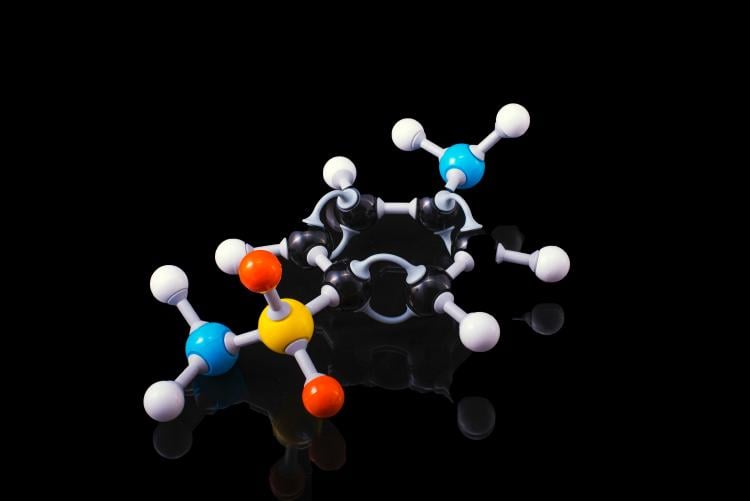
Molecules.
The optimum range in organic wastes for a correct composting is between 20 and 50 to 1. If the starting waste is rich in carbon and poor in nitrogen, fermentation will be slow, temperatures will not be high and carbon will be lost in the form of carbon dioxide. In the opposite case, at high relative nitrogen concentrations, nitrogen will be transformed into ammonia, preventing proper biological activity.
Depending on the type of organic waste, the calculation of the C/N ratio is not very reliable because, even if all the nitrogen is available, or biodegradable, only a fraction of carbon can be biodegradable. Thus, the C/N ratio can vary (even double) depending on whether Total Organic Carbon or Available Organic Carbon is considered.
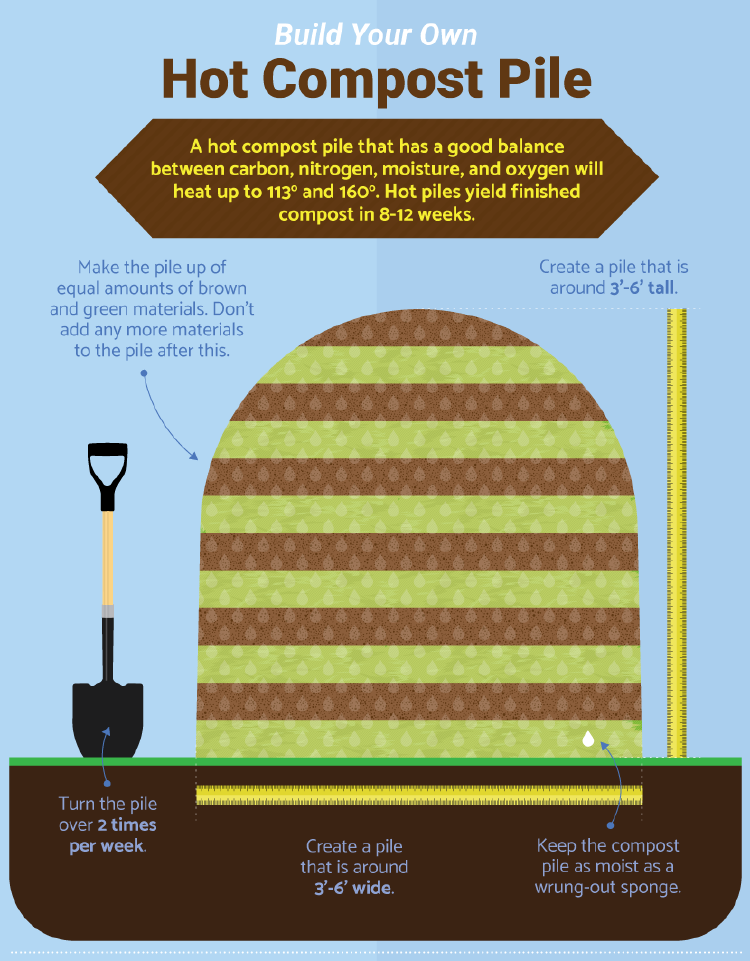
Hot compost pile graph.
As we already said, a properly conducted fermentation process of organic matter from solid waste, for example from a whole city, has a C/N ratio in the fermentable mass between 25 and 35. For lower values, carbon-rich materials should be added (straw, wood chips, etc), and in the opposite case, nitrogen-rich materials (manure, sewage sludge, etc).
During the fermentation process, the C/N ratio decreases to values between 12 and 18 due to carbon losses as carbon dioxide.
If the final material obtained after fermentation has a high C/N value, it indicates that it has not undergone complete decomposition, and if the ratio is very low, it may be due to excessive mineralization, although this all depends on the characteristics of the starting material.
Of the carbon needed for the microorganisms in a compost pile to grow, part is used to obtain metabolic energy, resulting in the emission of CO2. The remaining part is incorporated into their own cellular structure together with nitrogen (10/1). Thus, both the amount of carbon and its relationship with nitrogen and its chemical nature are very important, since depending on this there will be more or less growth and metabolic activity (heat).
To start composting we must correctly adjust the carbon-nitrogen ratio with the organic waste we want to use. But what happens when the ratio is not correct? There are two possibilities: too high or too low.
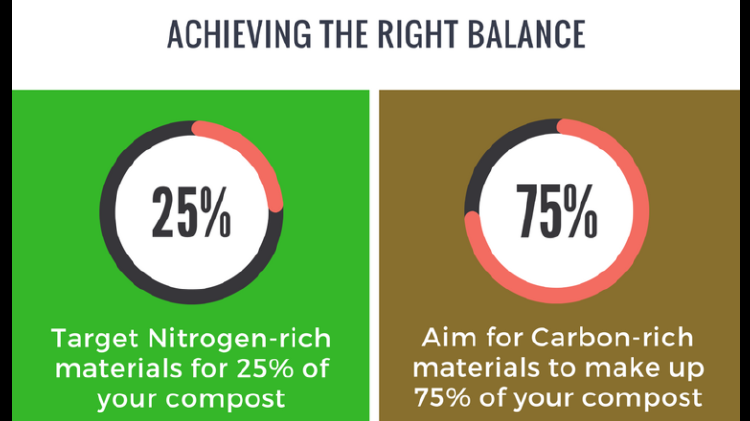
The onset of decomposition is characterized by an appreciable increase in temperature. If after a few days the pile does not warm up, the possible causes should be checked.
That could mean the C/N ratio is higher than 30 and the microbial process is not optimized, and there is a nitrogen deficit in the mixture. This will cause that the composting process is prolonged and that the compost pile is not kept warm. In order to keep a compost pile hot it is necessary to remake the pile and to mix it with manure to provide the Nitrogen that the microorganisms need to live.
A pile that's too wet can also be hard to keep it hot. In this case, turning the and mixing with dry materials will trigger decomposition. If the pile is too small to be heated, it is preferable to make compost in bins when little material is available. Keep a small compost pile hot will be easier in a container.
How to keep a compost pile hot in winter? When the ambient temperature is too cold to allow the heap to heat up you should wait for spring and activate the heap by turning it over and adding a few layers of fresh materials.
On the other hand, if the c/n ratio is less than 20, the microbial process is not optimized and there is an excess of nitrogen in the mixture. Nitrogen losses in the form of ammonia will occur.
In this situation, the pile heats up but gives off a strong smell of ammonia. The ammonia odor indicates that too much nitrogen has been added. It is not necessary to correct it, but it tells us that we should incorporate less nitrogenous material next time if similar materials are used.

You can also read Composting Problems: Types and How to Deal with Them
Now you already know what hot composting is about and how to keep a compost pile hot, why keep it cold? Excellent quality and fast composting is possible.
For more information about this, check out this article: The Perfect Compost Ratio: Greens to Brown Balance
